Damia Bouic • Jan 16, 2018
A new look at Venus with Akatsuki
Editor's note: This blog post is a collaboration between an image processing enthusiast (Damia Bouic) and three professional scientists (Thomas Widemann, Emmanuel Marcq, and Colin Wilson). Bouic has dived into a data set and processed images, and Widemann, Marcq, and Wilson have interpreted them. In the blog post below, the scientists' words are set off in block quotes preceded by "WMW"; the rest of the text and all the images are Damia's work. --ESL
Akatsuki (also known as PLANET-C and Venus Climate Orbiter) is a Japanese mission that launched almost eight years ago, in 2010. It missed its first attempt to orbit Venus on December 7, 2010 due to the failure of its orbital insertion rocket. It was only on December 7, 2015, after several years of wandering around the Sun, that Akatsuki succeeded in placing itself in orbit around the enigmatic planet. Even though the new orbit of Akatsuki is distant and highly elongated, a large portion of the original science objectives may still be achieved.
That's Akatsuki's story. I was not very interested in this mission until one day when curiosity took me to its website, where I found the archival images from the mission. I thought it might be nice to try to process some images, just to see what happened. I am not disappointed with the result, which I present to you below.
Thomas Widemann, Emmanuel Marcq, and Colin Wilson (WMW): Damia's images are fabulous, and details emerge that are completely new to us.
I focused on the data from two cameras. The UVI camera captures images in ultraviolet wavelengths, at 283 and 365 nanometers. It is intended to observe the atmosphere of the planet in great detail. These allow me to make false-colour images [using 283nm in the blue channel and 365nm in the red], after some small manipulation to build a synthetic green channel. The IR2 camera permits -- among other things -- a view of the intense heat emanating from the planet's atmosphere on its night side.
WMW: UVI is seeing sunlight reflected from upper clouds and hazes lying at around 65-75 kilometers altitude. The IR2 camera reveals features in the lower clouds of Venus, at 48 to 55 kilometers above the surface. At these wavelengths, the clouds are backlit: darker regions in the images show thicker clouds.
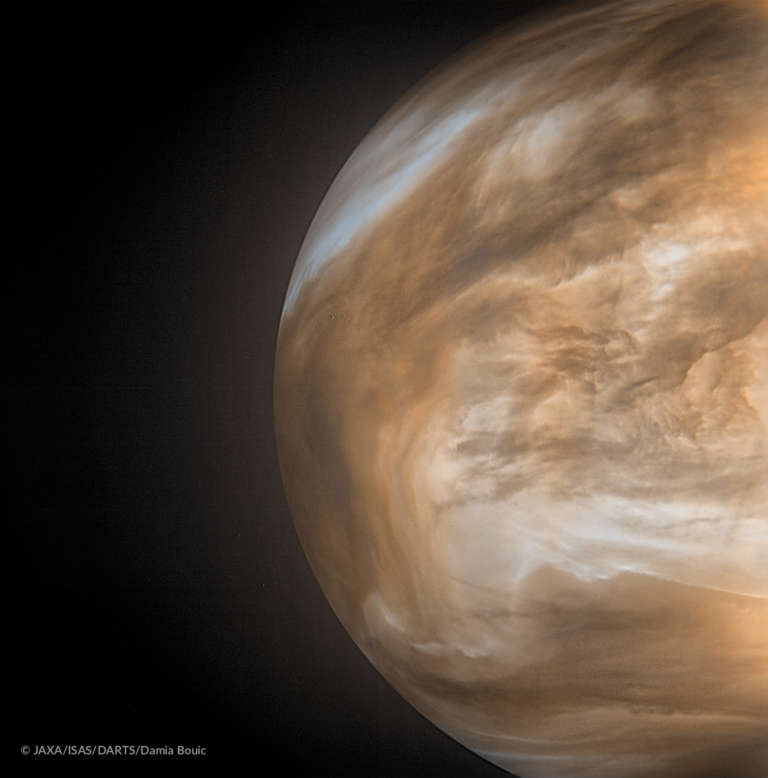
WMW: False color images like these are ideal for identifying features like storms or plumes of acidic droplets. ESA’s Venus Express had great views of polar regions and the same technique was used to study unusual clouds in the polar vortex. The Akatsuki images, on the other hand, show low latitude regions and have higher spatial resolution: they show all kinds of new details and features that may be correlated to surface topography . They can also be used to monitor the cloud motions as dynamical tracers of the horizontal winds in the lower cloud region.

WMW: The upper cloud is mainly composed of sulphuric acid, but includes other minor constituents such as liquid water and an unknown UV absorber. This unknown UV absorber shows up particularly in the 365 nm images. In contrast, the other UV channel at 285 nm is also sensitive to sulphur dioxide, a gas which may originally have been emitted from volcanoes (volcanism is the main source of SO2 on Earth, this is likely to be the case on Venus as well).
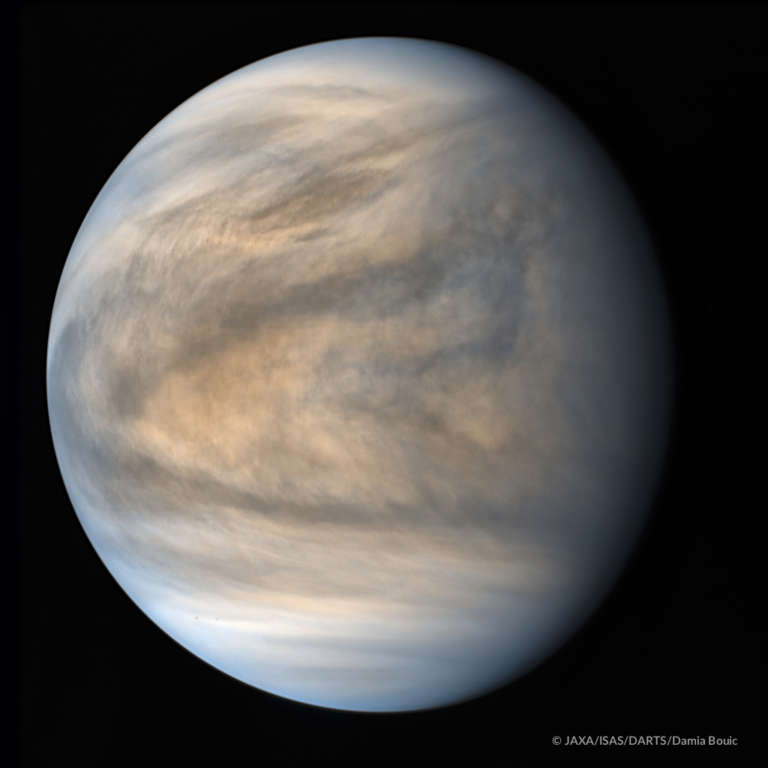
WMW: The variations in color in these Images show the relative importance of the unknown UV cloud absorber and the sulphur dioxide plumes from the lower atmosphere that regularly burst through the clouds. Actually, sulphur dioxide survives only for a few hours before it is destroyed by UV sunlight above the clouds into other chemical species that contribute to cloud formation. The details of where and how often sulphur dioxide is supplied above the clouds are still poorly known, and such pictures will be of great help to elucidate this question.
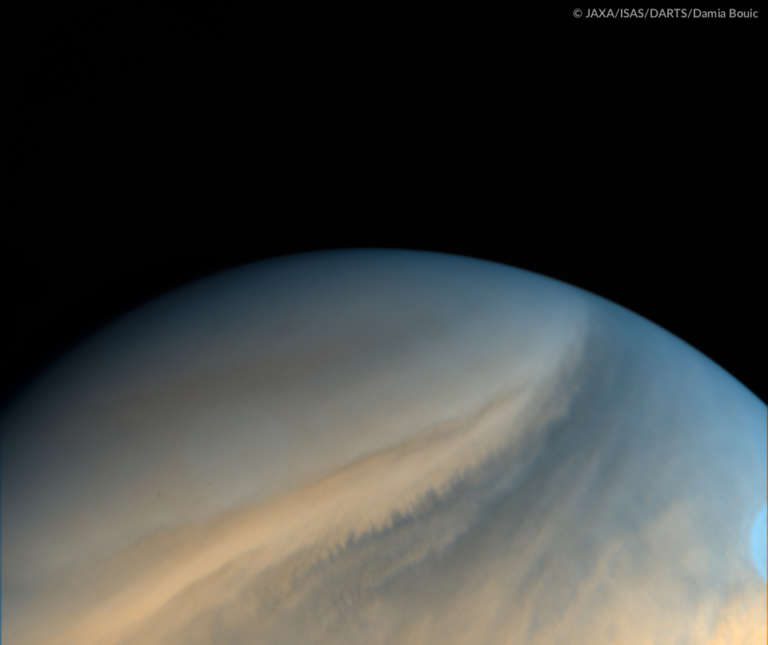
WMW: Smoother polar regions and streaky clouds point to non-turbulent horizontal flow that dominates over buoyant convection at high latitudes.
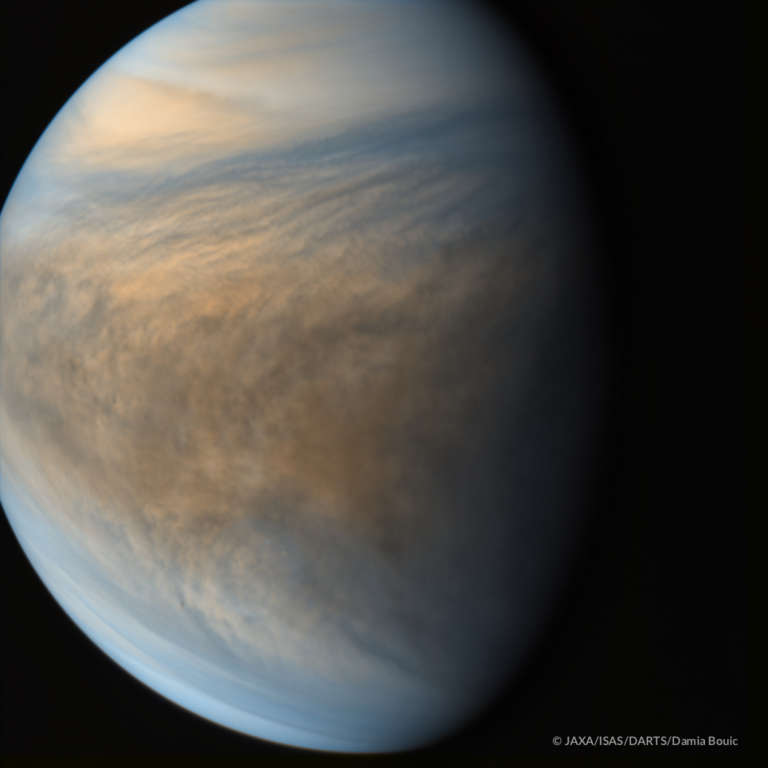
WMW: Mottled and spotty clouds at low latitudes indicate vigorous convective activity, where most of the solar energy is deposited within the clouds. This convective mixing brings the ultraviolet absorbers up from depth and increases the delivery of sulfur dioxide (SO2) to the cloud top. SO2 photodissociates under the effect of the solar radiation and, reversely, is formed by SO oxidation; further oxidation leads to SO3 formation. Finally, in combination with water vapor, it produces concentrated liquid sulfuric acid cloud droplets (75% H2SO4).
Following are more images from the IR2 camera.


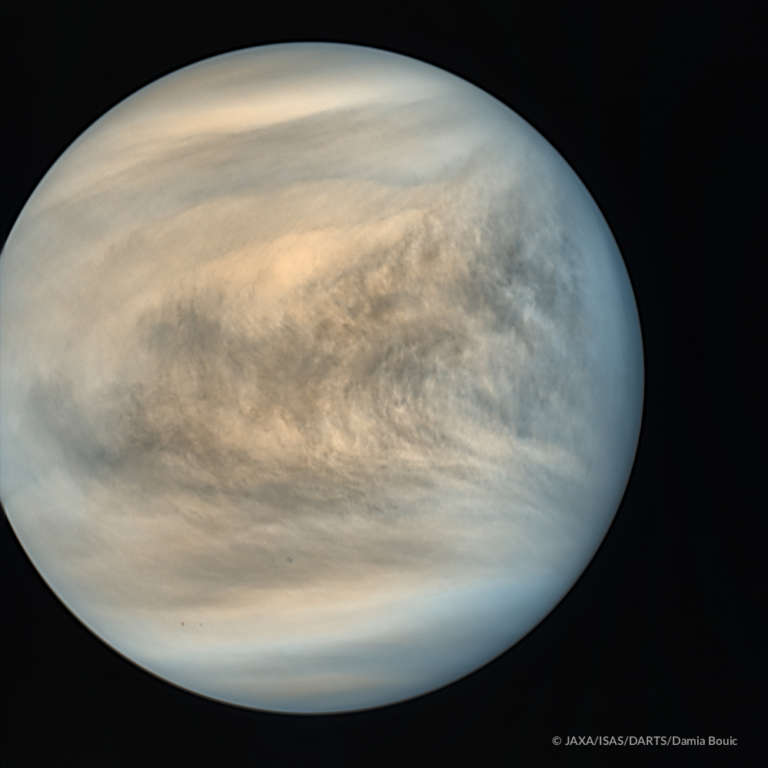
Edit of January 11th. Added 5 images, including IR2 images.

These images must be understood as "masks" or "negatives." Heat emanates from the deep layers of the atmosphere and is blocked by the thick cloud layer.
WMW: Brighter areas have higher brightness temperature, but in fact the underlying glowing lower atmoshere is remarkably uniform in terms of temperature horizontal variability. Contrasts in the Akatsuki photo are entirely due to the cloud thickness more than 20 kilometers above the glowing layer.

As we can see, Venus is a planet with complex meteorology.
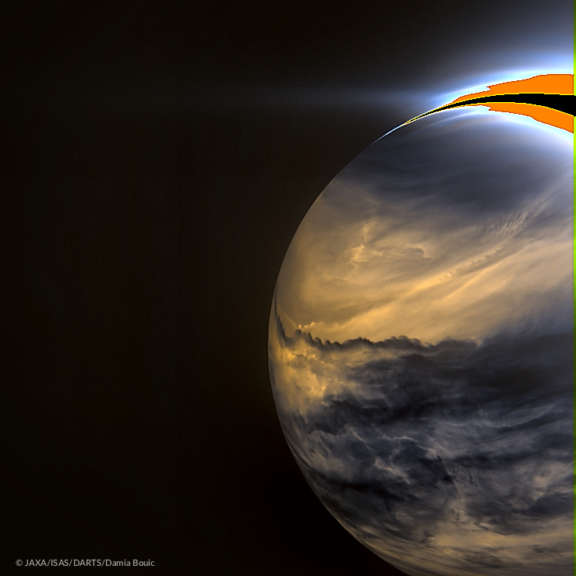
This image of great detail shows what seems to be a turbulent boundary (dark area sawtooth).
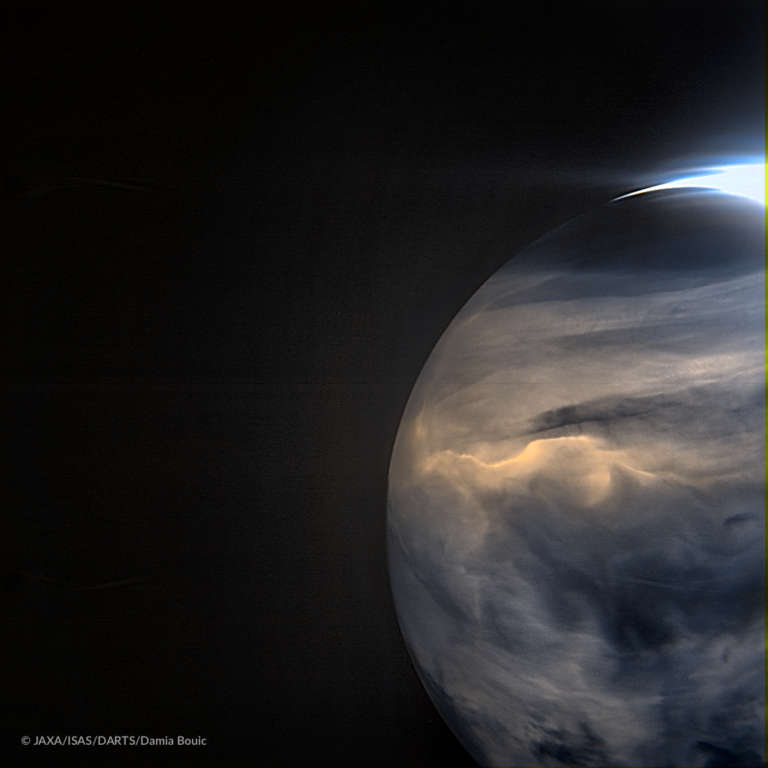

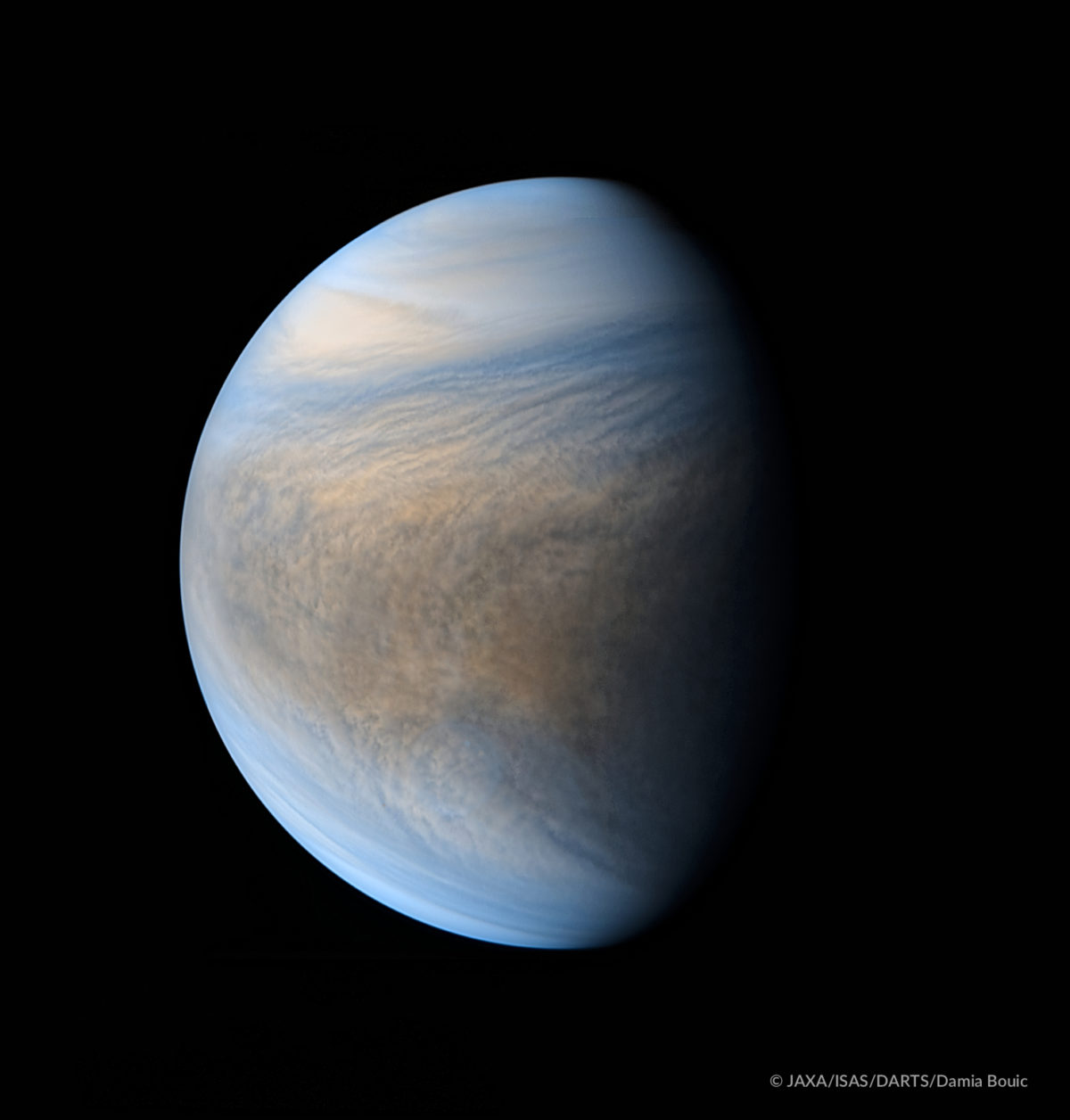
WMW: Damia's work reveals the detail and beauty of the Akatsuki observations. We hope that several readers will be inspired to also work with this data, and so trigger significant advances in our understanding of Venus. There will be a Venus town hall at LPSC in March. Those beautiful images should definitely be shown.
Support our core enterprises
Your support powers our mission to explore worlds, find life, and defend Earth. You make all the difference when you make a gift. Give today!
Donate

 Explore Worlds
Explore Worlds Find Life
Find Life Defend Earth
Defend Earth

